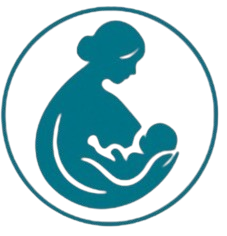Appendicitis is an inflammation of the appendix, a small pouch attached to the large intestine. It is one of the most common surgical emergencies in children, especially between the ages of 2 and 18 years. If untreated, appendicitis can lead to serious complications like perforation (bursting), which can result in infection and sepsis.
What is the Appendix?
The appendix is a small, tube-like organ located in the lower right abdomen. While its exact function is not fully understood, it is believed to play a role in immune function and may help store beneficial bacteria. However, when it becomes blocked or inflamed, it can lead to appendicitis.
1. Causes of Appendicitis in Children
Appendicitis is usually caused by a blockage in the appendix. This blockage can be due to:
- Fecal matter (hardened stool)
- Infection (viral, bacterial, or parasitic)
- Enlarged lymphatic tissue (due to infection elsewhere in the body)
- Foreign objects (rare)
Once the appendix becomes blocked, it can fill with bacteria, causing the appendix to swollen, inflamed, and infected. If left untreated, the appendix may eventually burst, leading to a life-threatening infection in the abdominal cavity (peritonitis).
2. Symptoms of Appendicitis in Children
The symptoms of appendicitis in children can vary based on their age and the severity of the condition. Common symptoms include:
A. Early Symptoms
- Abdominal pain starting near the belly button and then shifting to the lower right side (the appendix location).
- Loss of appetite or nausea.
- Vomiting after the abdominal pain begins.
- Low-grade fever (typically under 102°F or 38.9°C).
B. More Severe Symptoms
- Severe, sharp pain in the lower right abdomen.
- Tenderness and swelling in the lower right abdomen.
- Inability to pass gas or have a bowel movement.
- High fever (above 102°F or 39°C).
- Chills or shaking.
- Rapid breathing or a feeling of being very ill.
C. Young Children and Infants
- In infants and very young children, the symptoms may be vague, making diagnosis harder. They may exhibit:
- Fussiness or irritability.
- Poor feeding or vomiting.
- Pulling their legs toward the belly in pain.
3. Diagnosing Appendicitis in Children
A. Physical Examination
A healthcare provider will perform a physical exam and ask about the child’s symptoms. They will check for abdominal tenderness, particularly in the lower right side of the abdomen, and may press gently to see if it worsens the pain (which is a sign of appendicitis).
B. Imaging Tests
- Ultrasound: A common test to visualize the appendix and check for inflammation. It is non-invasive and particularly useful in children.
- CT Scan: Used if the diagnosis is unclear and when ultrasound results are inconclusive. It is more accurate but involves exposure to radiation.
- Blood Tests: To check for signs of infection, such as elevated white blood cell count.
4. Treatment of Appendicitis in Children
A. Non-Surgical Treatment (Rare)
In some cases, especially if the appendix has not ruptured, doctors may try a non-surgical approach with antibiotics, but surgery is generally the preferred treatment to prevent recurrence and complications.
B. Appendectomy (Surgical Removal of the Appendix)
The main treatment for appendicitis is an appendectomy, which involves the surgical removal of the appendix. There are two main types of appendectomy:
1. Laparoscopic Appendectomy (Minimally Invasive)
- A minimally invasive surgery involving small incisions and the use of a camera (laparoscope) to guide the surgeon.
- It is the most common method and allows for shorter recovery times, less pain, and smaller scars.
2. Open Appendectomy
- In cases where the appendix has ruptured or there is a complicated infection, a larger incision may be needed.
- The surgeon will remove the appendix and clean the area to prevent infection.
C. Post-Surgery Care
- Hospital stay: Usually a 2-3 day hospital stay after an appendectomy, but it can be longer if the appendix had ruptured.
- Pain management: Pain relief through oral medications or, if necessary, IV pain relievers.
- Antibiotics: If the appendix ruptured, antibiotics are given to prevent infection in the abdominal cavity.
- Diet: A gradual reintroduction of food, starting with clear liquids, then progressing to solid foods as tolerated.
D. Recovery Time
- Laparoscopic surgery: Typically, recovery takes about 1-2 weeks, and the child can resume normal activities.
- Open surgery: Recovery may take 3-4 weeks due to the more invasive nature of the procedure.
5. Complications of Appendicitis
If not treated promptly, appendicitis can lead to several serious complications:
- Perforated (ruptured) appendix: When the appendix bursts, infected material leaks into the abdominal cavity, leading to peritonitis (infection of the abdominal lining).
- Abscess formation: After a ruptured appendix, an abscess (pocket of infection) can form in the abdomen, requiring drainage and possibly extended hospital care.
- Sepsis: In severe cases, an untreated infection can spread to the bloodstream, causing sepsis, a life-threatening condition.
6. Prevention of Appendicitis
Since the cause of appendicitis is often unknown and it is typically not preventable, the best course of action is early detection and prompt treatment. There are no specific preventive measures for appendicitis, but maintaining a healthy lifestyle with a balanced diet and adequate hydration can help reduce the risk of gastrointestinal issues.


